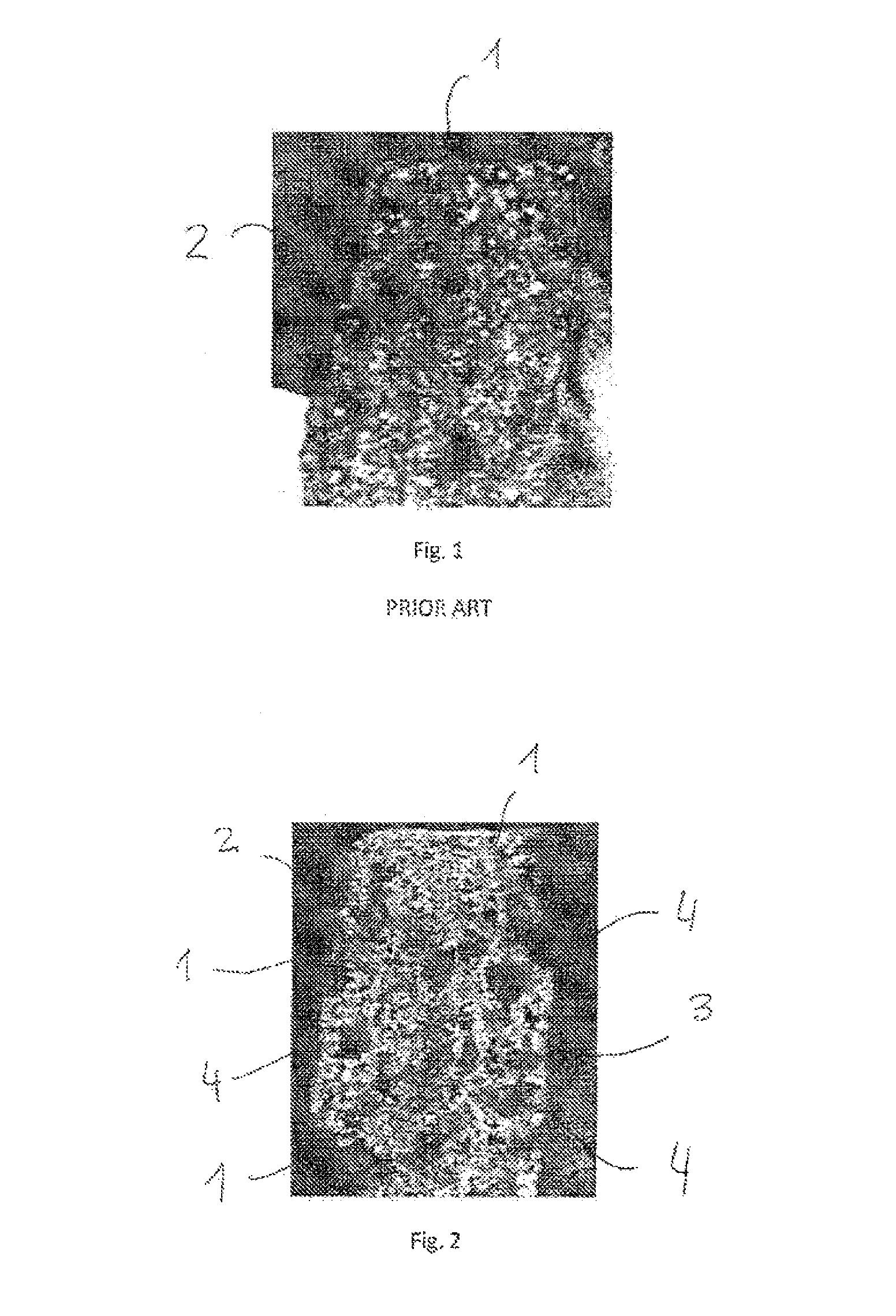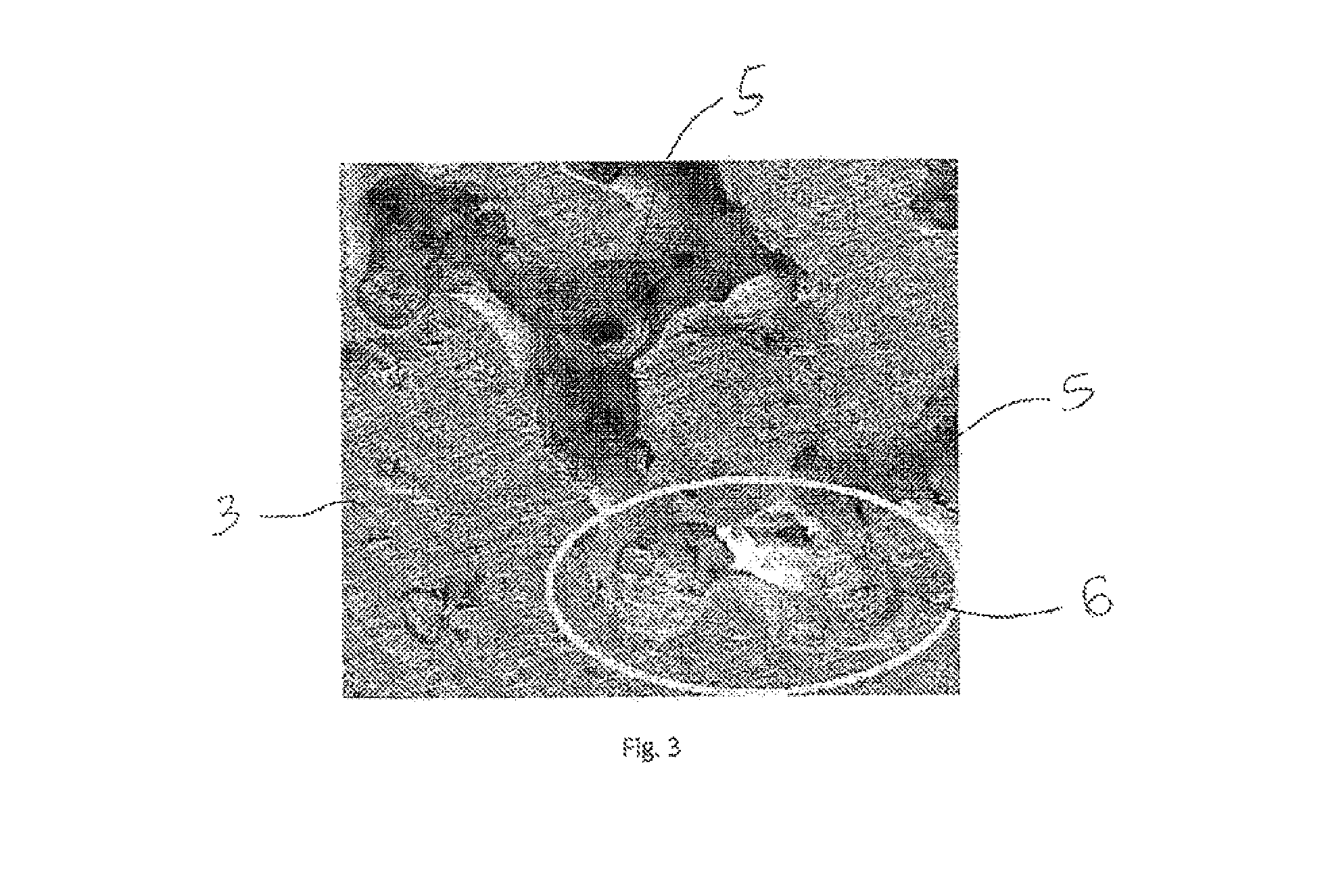Biomaterial and method for its realisation
a biomaterial and material technology, applied in the field of biomaterials, can solve the problems of poor mechanical resistance, inability to absorb, and poor mechanical resistance, and achieve the effects of improving mechanical resistance, and reducing the resistance of biomaterials
- Summary
- Abstract
- Description
- Claims
- Application Information
AI Technical Summary
Benefits of technology
Problems solved by technology
Method used
Image
Examples
Embodiment Construction
[0041]In the present disclosure, the term biomaterial is used to indicate material of any type or origin capable of interfacing with a biological system with the aim of increasing, treating or substituting any organ tissue or body function; the term bioinductivity is used to indicate the capacity of the biomaterial to cause the new-formation of the tissue with which such biomaterial is interfaced; the term bioconductivity is used to indicate the capacity of the biomaterial to create a suitable support, adapted to allow the colonisation of the progenitor cells of the tissue with which such material is interfaced and capable of guaranteeing survival and proliferation thereof.
[0042]The biomaterial according to the present invention is a biocompatible composite material comprising a component adapted to form a porous structural matrix.
[0043]Such component adapted to form a porous structural matrix may comprise polymeric components, pure metal components or made of alloy and / or ceramic c...
PUM
| Property | Measurement | Unit |
|---|---|---|
| size | aaaaa | aaaaa |
| biocompatible | aaaaa | aaaaa |
| dimension | aaaaa | aaaaa |
Abstract
Description
Claims
Application Information
 Login to View More
Login to View More - R&D
- Intellectual Property
- Life Sciences
- Materials
- Tech Scout
- Unparalleled Data Quality
- Higher Quality Content
- 60% Fewer Hallucinations
Browse by: Latest US Patents, China's latest patents, Technical Efficacy Thesaurus, Application Domain, Technology Topic, Popular Technical Reports.
© 2025 PatSnap. All rights reserved.Legal|Privacy policy|Modern Slavery Act Transparency Statement|Sitemap|About US| Contact US: help@patsnap.com


